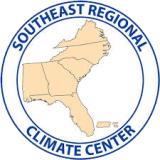Southeast Climate Monthly Webinar: January 24, 2023
Temperatures were above average over the past two months, except during an Arctic Outbreak that affected the broader region in late December. Recent rains have helped eliminate drought across the interior of the region, with some dry areas still remaining along the coastal Florida Panhandle to the Delmarva Peninsula. Streamflows are currently near normal across most of the region, as we head into the peak of recharge season in the southeast U.S. The exception is the Florida Peninsula where the dry season is in full swing.
Looking ahead: The next several weeks look to be warm and wet across much of the region. Over the next three months, temperatures are expected to be above average across the region, with below-average precipitation across Florida and equal chances of wetter or drier conditions elsewhere. While drought is currently receding, it is expected to persist in existing areas and expand across the Florida Peninsula over the next 3 months. Some flooding is expected over the next 8–10 weeks, which is a normal risk this time of year for the interior river systems. A transition from La Niña to ENSO-neutral is expected over the next several months.
Check out this month’s special presentation, The Southeast U.S. – A Year in Review, which provides an excellent perspective of climate trends observed in 2022 across the region.
About This Webinar
The Southeast Climate monthly webinar series is hosted by the Southeast Regional Climate Center, the National Integrated Drought Information System (NIDIS), and the NOAA National Weather Service. These webinars provide the region with timely information on current and developing climate conditions such as drought, floods, and tropical storms, as well as climatic events like El Niño and La Niña. Speakers may also discuss the impacts of these conditions on topics such as agriculture production, water resources, wildfires, and ecosystems.






